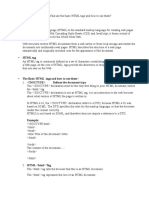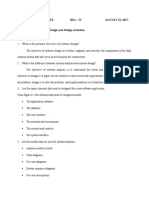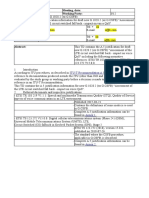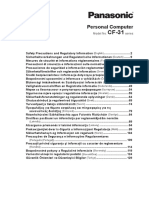0% found this document useful (0 votes)
17 views3 pages2 Structure of HTML
HTML stands for Hypertext Markup Language, which allows users to navigate between documents through hyperlinks and defines the structure of content using tags. HTML tags are categorized into paired and unpaired tags, with specific syntax for each. The structure of an HTML document includes the doctype declaration, html, head, and body sections, each serving distinct purposes for rendering content in a web browser.
Uploaded by
Tʜᴇ WɪᴛᴄʜᴇʀCopyright
© © All Rights Reserved
We take content rights seriously. If you suspect this is your content, claim it here.
Available Formats
Download as PDF, TXT or read online on Scribd
0% found this document useful (0 votes)
17 views3 pages2 Structure of HTML
HTML stands for Hypertext Markup Language, which allows users to navigate between documents through hyperlinks and defines the structure of content using tags. HTML tags are categorized into paired and unpaired tags, with specific syntax for each. The structure of an HTML document includes the doctype declaration, html, head, and body sections, each serving distinct purposes for rendering content in a web browser.
Uploaded by
Tʜᴇ WɪᴛᴄʜᴇʀCopyright
© © All Rights Reserved
We take content rights seriously. If you suspect this is your content, claim it here.
Available Formats
Download as PDF, TXT or read online on Scribd
/ 3




















































































